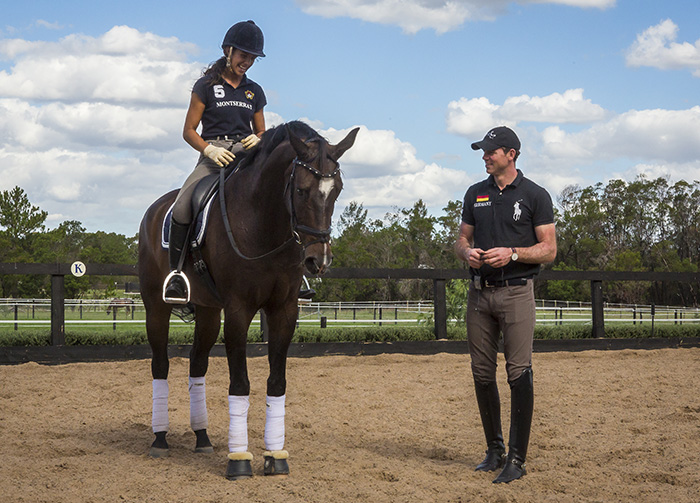
Rebecca Ashton sits in on a very special dressage lesson
– she also took the photos…
One of Australia’s most gifted young riders was in the arena with Stefan Wolff on his recent visit. With good training from the start in Australia from the late Miguel Tavora, and time spent in Europe with Wolfram Wittig and Johan Hamminga, Grace was able to understand, and immediately put into place, what Stefan was asking. A lot of the work was very subtle, but with two real horse people working together, the training sessions were fabulous to watch.
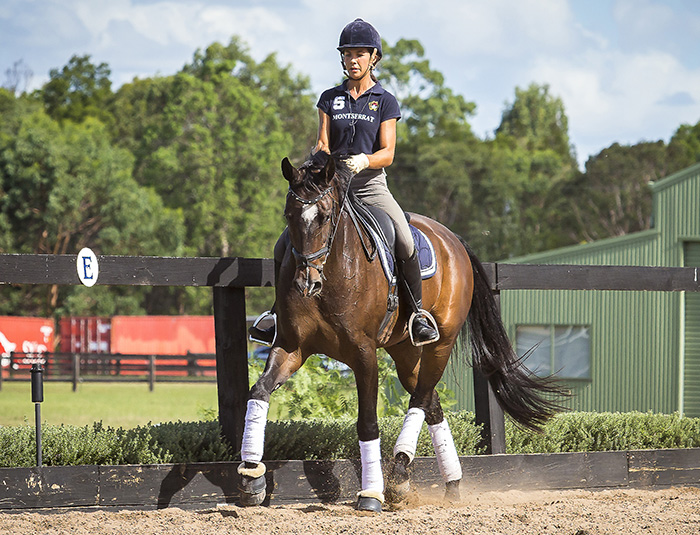
Grace’s first horse was the eight-year-old NS San Andreas (San Jose/Monopol), owned by Liz Caldwell. Grace had only had the ride for six weeks, so was still trying to iron out a few issues, one being the contact.
San Andreas, like most horses has a strong side, and a more unsteady side, so Stefan wanted to stop the horse’s desire to avoid the left contact. Grace trotted the horse on the left rein and began to work on his unsteady left side, over to Stefan: “work until he feels like he’s not avoiding the left rein, he needs to trot into that rein. Make the outside rein the active rein and the inside rein is sitting there waiting. Carry the poll a bit higher and more forward. Exactly. Feel the difference? Get his confidence, the bit is his, your hand is his.”
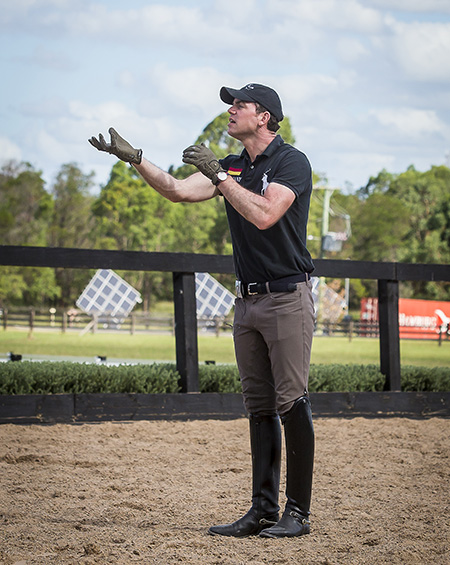
Time for a change of rein, “You rode him shoulder fore on the left rein, but this side it would be wrong to do that. Instead let him travel into that left outside rein. Make sure his haunches aren’t falling out this way. Lower hand, that’s how you straighten the horse, you soften the strong side and put the weaker side more in charge. You can really see how the back starts working now behind the saddle. Get it again and again, that you can give the inside rein because you’ve got the horse in the outside rein.”
Canter time and Andy was holding the contact better at this pace: “That’s good now because he starts using his body. If he would give you a little buck now, that would be good. Sometimes they do that when they start to loosen their back, maybe not a buck, but cantering bigger. Pat him. Give him some freedom. The horse should be able to play around a bit.”When there’s a little hiccup, “It doesn’t matter. They’re only horses after all. Canter with a light seat. Let him go, keep him rather high in the poll. Do a couple of laps like that. Keep him in his natural balance.”
more follows
Will you be there?? Tickets to the Carl Hester Masterclass, Sunday July 22, are available at www.qsec.com.au/CarlHester
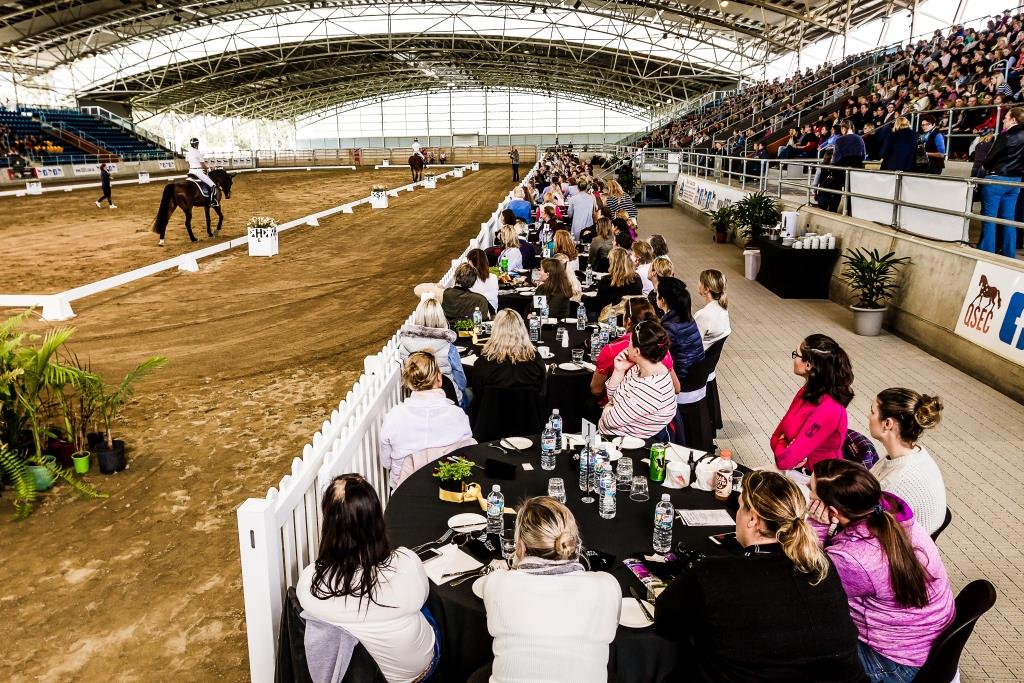
“Then trot long rein. Don’t be overly strict. Let him feel a bit of freedom. You can put him together in a minute. Let him supple himself for a bit. Then canter on.”
A big, loose canter down the long sides, reminding the horse to keep his shoulders to the left, as he got looser and looser: “Don’t over flex him because you’ll take him out of balance. Now he works more and more through the body.”
“Horses like him often benefit from riding up and down hills, not too steep,”so it was lucky there was a small slope up to Di’s stables from the arena so Grace walked him up and down three times during a walk break in the lesson.
Into trot and shoulder in on the long side was next. “Here comes the frame. The bent, inside line is getting longer, not curled up. Only think uphill, not backwards.Now ten-metre trot circles and for spiral them into seven-metres, then back to the track in shoulder in.”
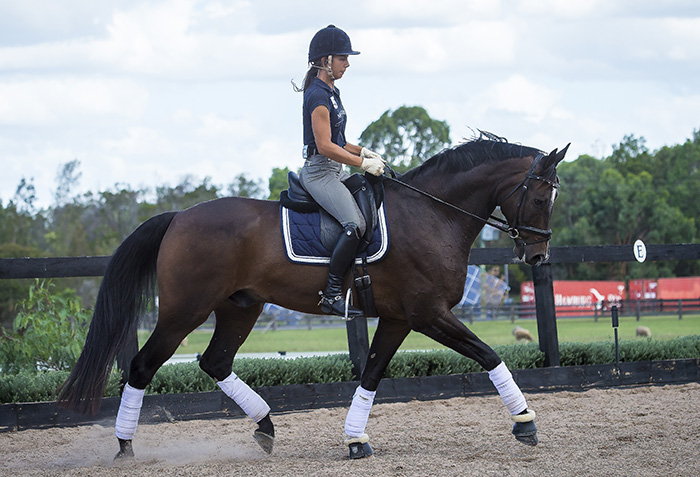
On the right rein, Grace had to think more about the whole body of the horse rather than just what the front end was doing, “When you have the shoulders in position, almost think of bringing the haunches in as well, but half as much so you have bend in the horse’s body because you want the right side of his pelvis to lower. Keep the haunches with you. Don’t worry if he’s a bit fussy, it’s hard for him.”
Next the exercise developed into shoulder in, alternating with haunches in, making sure the bend in the horse’s body remained the same. That then flowed into half pass. “While you half pass, you can vary a little between shoulder in, and haunches in, just a touch. There you go. Nice.”
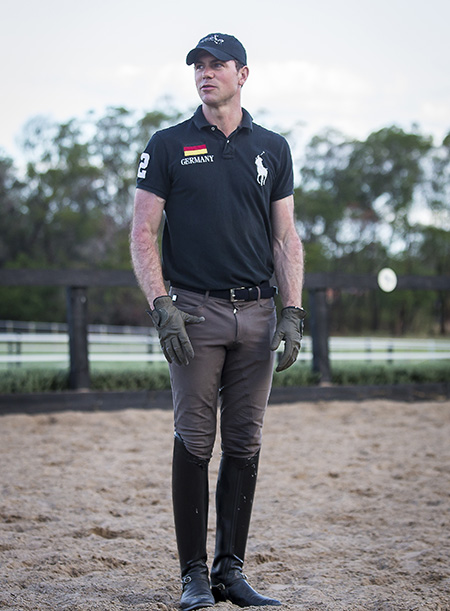
When the exercise was repeated at the canter, San Andreas dropped a little lower in his frame, but Stefan didn’t mind because the horse was working his body differently than at the start, “That’s ok. He’s not avoiding your hand now, he’s yielding to it.”
The horse was becoming more through with the exercises so the lesson finished with a look at the medium trot. “He starts ok but then he gets a bit stiff so when you feel that, just do a couple of strides shoulder in and then medium again.”That was a good place to finish.
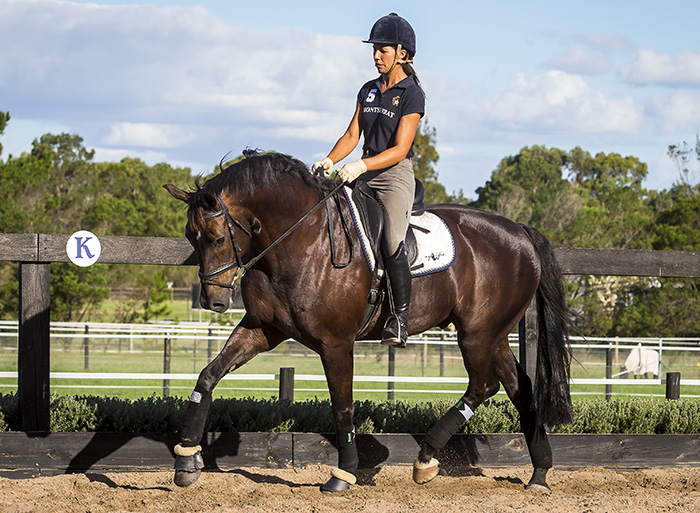
Grace’s second horse at the clinic was the seven-year-old Hollingrove Sorrento (Sir Donnerhall/Belissimo M). Grace told me, “I own most of him!”.
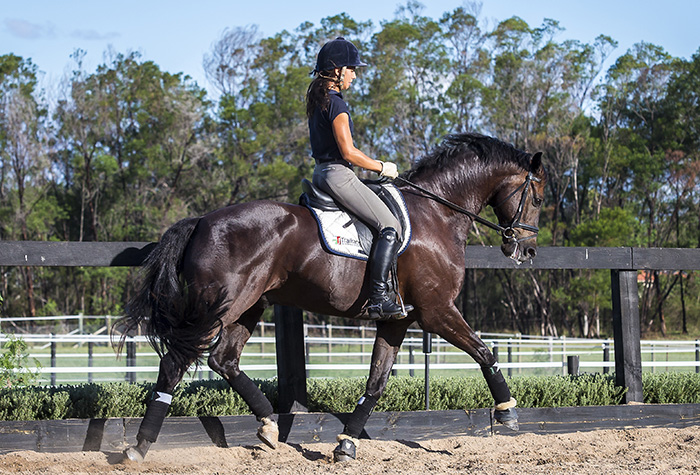
Grace said the left canter on this one was a little tricky and not as balanced so she wanted Stefan to have a feel.
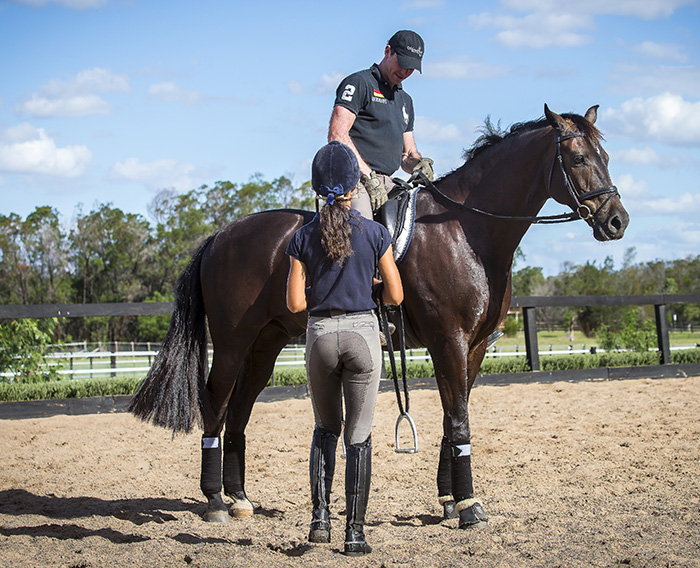
After a quick stirrup leather change (those long, German legs!), Stefan moved Simba around in the lateral work and had a play with the paces (and couldn’t resist having a feel of that spectacular trot!) “I think the canter can be worked out.”
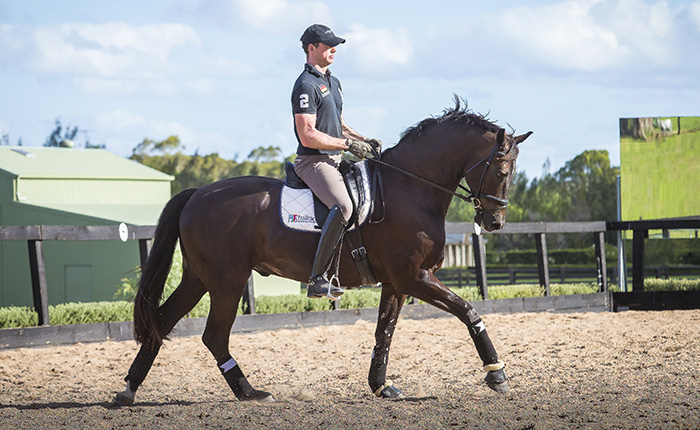
“He’s like a lot of Sir Donnerhalls, he tends to push his shoulder blades together. In collection, the shoulder blades need to slide. Everyone talks about the hind end in collection, but I also think the shoulder mechanics are important. They need to slide but he almost holds his together. You almost need to let him broaden out in front a bit, as an image. I can give you my image, you’re good enough to understand and play around with the idea. If there are hiccups on the way, don’t worry about it.”
Most riders and they would struggle with this concept, but Grace was onto it in a heartbeat. Grace questioned, “If he wiggles a bit?”
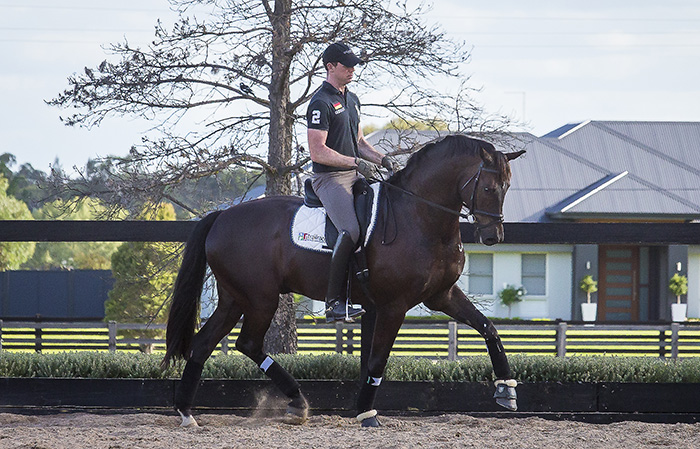
“That’s ok, because he softens. We want the body position and the thoroughness. This is the purpose. Then we worry about the big rhythm.”
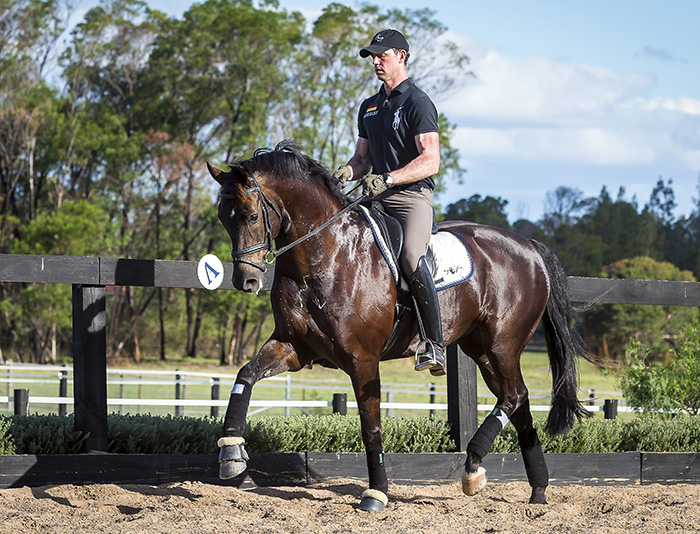
“When you trot on, you don’t want him to push his back into his shoulders. Take it easy, just start the process. It will take time. Don’t have your thigh tight or a clenching knee because where there is the back muscle. They need some space there. Let him sit on your calf rather than your thigh. When he comes back, just keep a swing in your leg for him.”
more follows
Are you coming to Tryon in September to see the best in the world? You can if you hurry: Want a hassle-free 2018 WEG? Want to be part of a small group? Ring 03 9926 3555 or email: ouequestrian@organisationunlimited.com.au
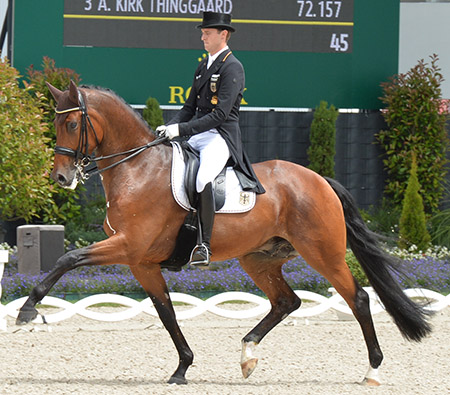
This was subtle work and it takes a good rider to put it into correct practice without upsetting the balance and rhythm of a horse with such expressive movement. Grace was just the person for the job. Stefan didn’t want her to think any differently about the left canter that was a little weaker, “The movement will get better when he uses his body better. Don’t get nervous about the movement. Just do in the canter what you were doing in the trot.”
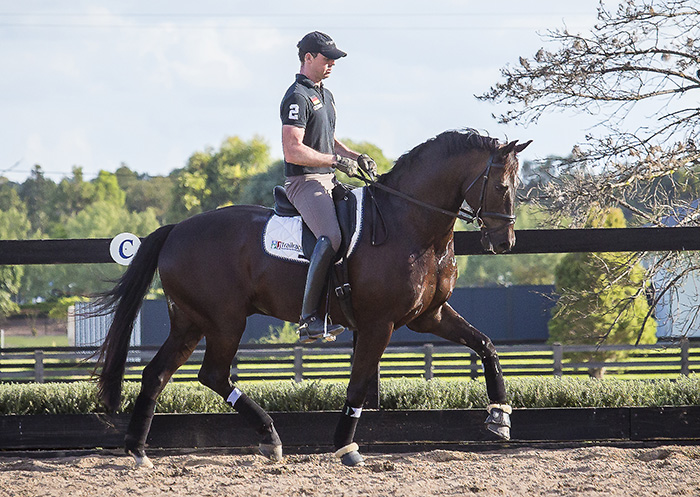
“The leg doesn’t push, it receives in the half halt. The horse comes back to it and you tap, tap. The back is coming better now.”
It was all about getting the horse soft through his body and being moveable within his frame and just playing a little with the mechanics of the front end without creating tension. Even within that short time, the canter was freeing up. Watch out world!
Thanks to Di White who is always a gracious hostess, and to Grace and Stefan for letting me watch their wonderful work.
next Rebecca talks to Grace

Grace

What did you think of your first time working with Stefan?
Definitely along the lines of what I expected. I’ve read a few articles in The Horse Magazine, I’ll have you know!! haha. So I came in with a pretty good idea of what he’d be after, and I’really liked those ideas, so I thought it would be good to come down with a couple of horses with little issues that I’ve been working on. It was really good. I’m really pleased with how Andy was going. I’m really lucky to have the ride on him.
We’ve had a short time together so we’re still just creating that connection. Some of the exercises and ideas Stefan had were not necessarily different to what I know, but put in a different way and explained a little bit differently which seemed to work. Today I found the first horse was, right from the start, much steadier in the contact and he wasn’t grabbing the bit like he did yesterday. That transferred into a looser back and then the trot came freer towards the end. The lateral work was a little less stilted so I was really, really happy with that.
Simba this afternoon, I’ve always thought he’s an incredible horse; really, really super. I love him to bits, but I’ve had some trouble with the balance in his canter and I haven’t really found yet a way of helping him out through his balance. The ideas that Stefan talked about today, like using his shoulders and allowing him to be freer. That was really handy.
I asked Stefan to jump on because I’ve never seen him go, and also to have a feel because he can look one way, but you can feel other things on top. When Stefan got off and talked about the shoulders and the back end coming in the half halts and letting the front end be more solid, straight away I could picture what he was saying and when I jumped on, the trot felt amazing; not amazing that his legs were up around his ears, but that they matched, and we had that freedom through the shoulder and it was very connected from behind. I’m really looking forward to tomorrow.
Stefan
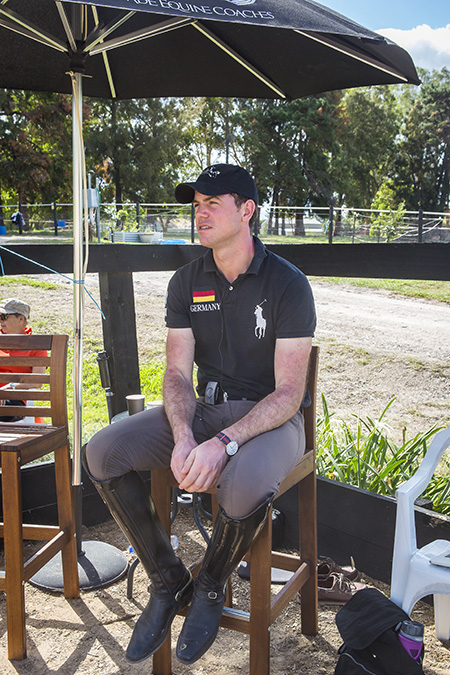
It’s the first time I’ve worked with Grace and she is a very, very talented rider in my opinion and also very teachable. She can put things together very quickly, she’s very sharp and very well educated which is always fun to work with. She has an excellent seat and a very good feeling for the horse.
The first horse had a bit of a contact weakness. It was not really in front of her, and not really maintaining a good, steady contact, and was coming behind the bit at times on the first day. That together with some straightness issues, which is normal really, those two things often come together. That’s what I was really helping her with, riding to the hollow side, shoulder fore. Especially on circle lines, spiralling in according to the hollowness. Because she’s a good rider, we could combine that with tempo differences, with light stretches, always alternating with more collected positions to get the horse more used to opening the entire top line. That was today quite a bit better, and I’m expecting that to develop even more tomorrow. It showed that the first horse was starting to move more through the body than the first day. The first day it was moving ok but not really soft through the body with the muscles working economically.
With the second horse, it was even more of a straightness issue that showed especially in canter left, it was very short. Grace said that was her main problem with the horse. But if it’s crystal clear that the canter on one rein is better than the other, it’s a straightness issue, there’s no way around it.
We pretty much did the same programme. I hopped on and rode him a bit. He progressed very quickly, especially in the trot work, which is fun. That can usually take a while though, because the muscle structure has to adjust. You don’t just press one button and it’s straight and the canter is entirely fixed. It’s like everyone who has been to a physio. It’s like some people for example walking with their head down and you tell them to bring their head up and straighten up and engage your core, like a personal trainer would advise, and it lasts for five steps and they’re looking down again. And these are people. It’s the same with the horse; it does take a while. But with Grace working on it, I expect it all to be worked out well.



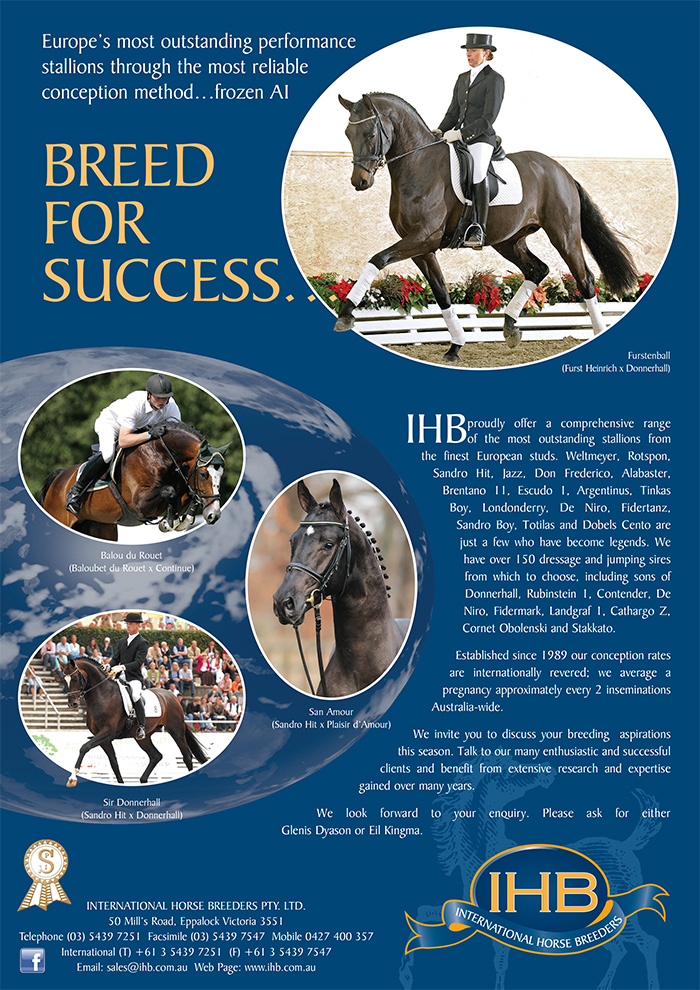
Another wonderful Stefan Wolff piece, the only thing that would make these articles even better is a little touch of video. Please!!!! <3